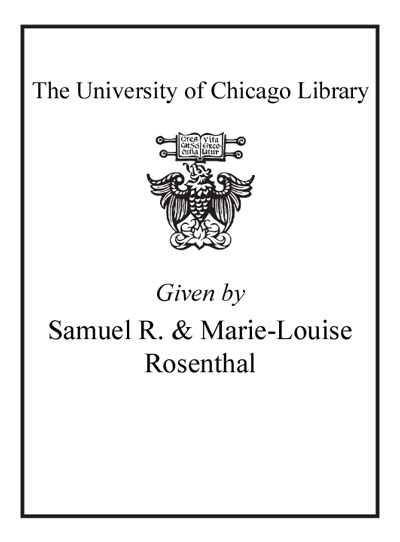The world new made : figurative painting in the twentieth century /
Saved in:
| Author / Creator: | Hyman, Timothy, author. |
|---|---|
| Imprint: | New York, New York : Thames & Hudson, 2016. ©2016. |
| Description: | 256 pages : illustrations (chiefly color) ; 27 cm |
| Language: | English |
| Subject: | |
| Format: | Print Book |
| URL for this record: | http://pi.lib.uchicago.edu/1001/cat/bib/10907157 |
Table of Contents:
- Introduction : Painting and experience in the twentieth century (Henri Matisse, The dance, 1909-10) : Modernism as liberty
- Peopling the void: episodes from an alternative history
- 1. After Cubism: reinventing the language of representation (Pablo Picasso, Seated man, 1914, and Fernand Léger, The campers, 1954) : Chagall's Half past three (The poet) (1911)
- Matisse's View of Notre Dame (1914)
- Léger, Rousseau and the 'return to "great subjects'" (1918-54)
- Classicism after Futurism: Carrà and Sironi (1921-22)
- Towards the Chagall of Dead souls (1920-25)
- Muralism part 1: Rivera's return to Mexico (1921-24)
- Muralism part 2: Benode Behari Mukherjee's The lives of the medieval Indian saints (1946-47)
- Marsden Hartley's 'Late courage' (1938-40)
- Francis Bacon's Three studies for a crucifixion (1962)
- Paula Rego: The barn (1994)
- 2. After Expressionism: 'The New Thingness' (Emil Nolde, Excited people, 1913, and Max Beckmann, The night, 1918-1919) : Not the how but the what: Otto Dix and the Neue Sachlichkeit generation (1917-32)
- 'A new sort of realism': the war and its aftermath in English painting: Stanley Spencer, Paul Nash, William Roberts, Edward Burra (1914-37)
- Early Balthus: a puppet master (1933-56)
- Edward Hopper's Nighthawks (1942)
- The libertarian line: Alice Neel and the modern portrait (1933-80)
- Lucian Freud's Interior at Paddington (1951)
- 3. First-person painting (Edouard Vuillard, Married life, 1900, and Pierre Bonnard, Dining room in the country, 1913) : Paula Modersohn-Becker: not 'that's me' but 'this is' (1900-7)
- Kirchner's 'hieroglyphic' street scenes (1913-14)
- Pierre Bonnard: a new space for the self (1924-46)
- Soutine and instability (1919-22)
- Frida Kahlo: What the water gave me (1934-38)
- Stanley Spencer: the sacred self and the Church of me (1937-59)
- Charlotte Salomon's Life? Or theatre? (1940-42)
- Max Beckmann: epics of self-art in Amsterdam (1937-46)
- Edvard Munch: Between clock and bed (1940-43)
- 4. Beyond the formalist canon: visionaries, dreamers, outsiders (James Ensor, Tribulations of St. Anthony, 1887, and Ken Kiff, Talking with a psychoanalyst, 1973-1979) : Alfred Kubin's Other side (1900-1930)
- Image against the word: Rabindranath Tagore as a painter (1928-40)
- Jack Yeats: towards 'The half-dreaming state' (1932-55)
- Henry Darger and The realms of the unreal (1937-73)
- Jacob Lawrence: The migration of the Negro (1940-41)
- Ken Kiff and The sequence (1971-90)
- 5. After Abstract Expressionism: towards a new history painting (Willem de Kooning, Woman I, 1950-52, and Philip Guston, Painting, smoking, eating, 1973 : R. B. Kitaj: avatar of Ezra (1960-76)
- David Hockney's The second marriage (1963)
- Alex Katz: the early cut-outs and their milieu (1959-62)
- Red Grooms and the sculpto-pictorama (1962-76)
- Georg Baselitz: Big night down the drain (1962-63)
- Philip Guston's renewal-by-drawing (1965-67)
- 'To bring back the lost reality of the world': Bhupen Khakhar and Indian experience (1975-87)
- Anselm Kiefer: Operation sea lion (1975-84)
- Ida Applebroog's Polyptychs (1986-89)
- William Kentridge's Felix narratives (1989-2003)
- Neo Rauch and Leipzig figuration (1999-2005)
- Leon Golub's final paintings (1999-2002)
- Epilogue : Continuous narratives (Howard Hodgkin, Two portraits of Terence McInerney, 1981)

